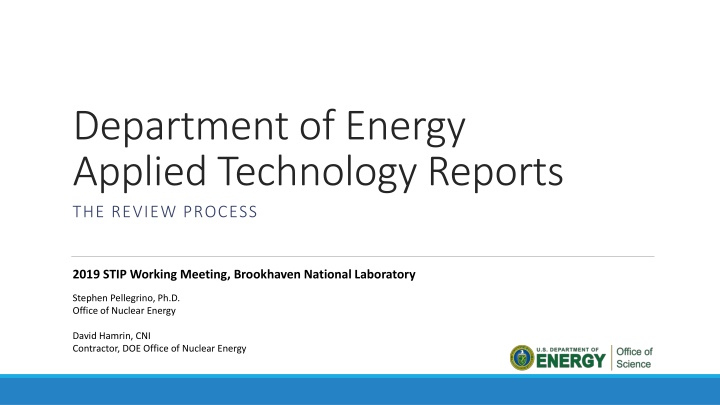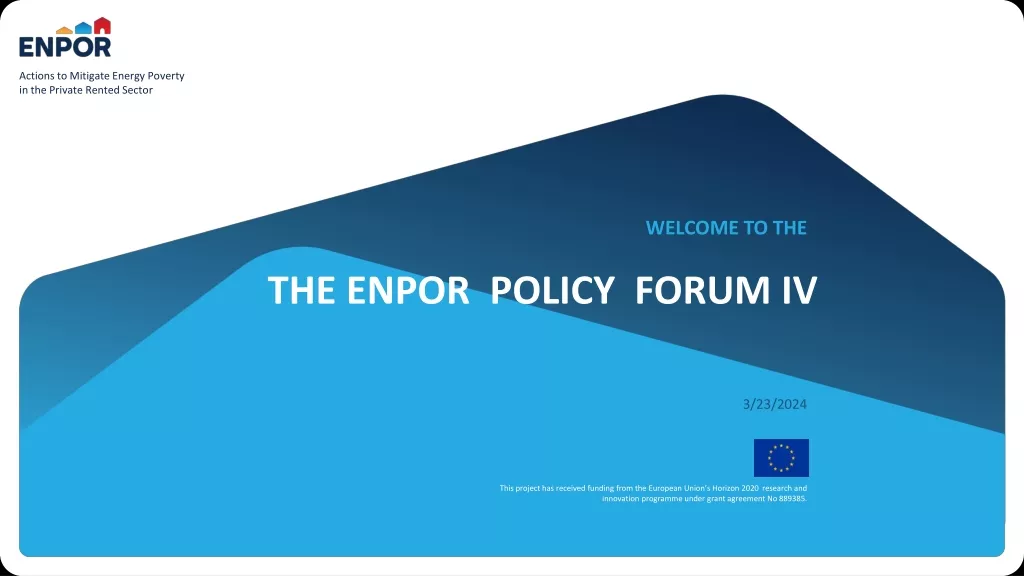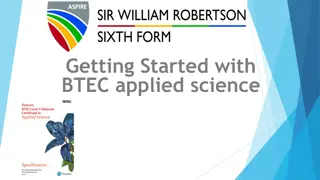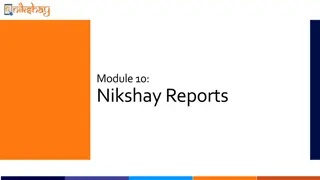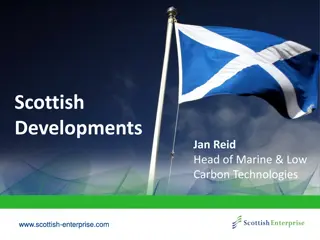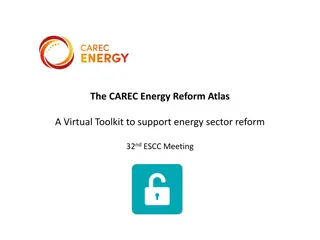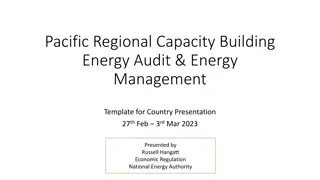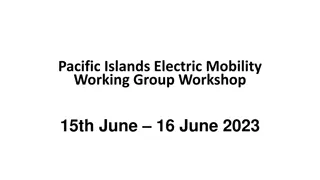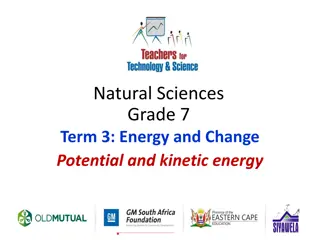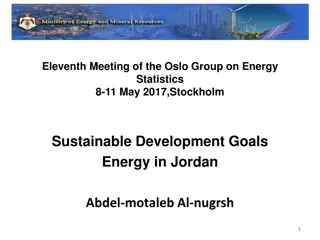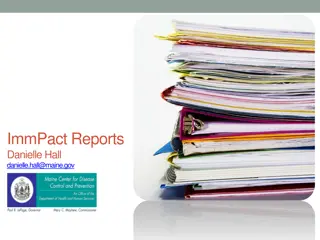Applied Technology Reports in Energy Sector
Applied Technology designation by Department of Energy (DOE) for preserving value of funded work in nuclear energy programs. Overview of access control, caveats, and author's credentials.
Download Presentation

Please find below an Image/Link to download the presentation.
The content on the website is provided AS IS for your information and personal use only. It may not be sold, licensed, or shared on other websites without obtaining consent from the author.If you encounter any issues during the download, it is possible that the publisher has removed the file from their server.
You are allowed to download the files provided on this website for personal or commercial use, subject to the condition that they are used lawfully. All files are the property of their respective owners.
The content on the website is provided AS IS for your information and personal use only. It may not be sold, licensed, or shared on other websites without obtaining consent from the author.
E N D
Presentation Transcript
Department of Energy Applied Technology Reports THE REVIEW PROCESS 2019 STIP Working Meeting, Brookhaven National Laboratory Stephen Pellegrino, Ph.D. Office of Nuclear Energy David Hamrin, CNI Contractor, DOE Office of Nuclear Energy
Yes, but just what is APPLIED TECHNOLOGY? Applied Technology = a designation created by the Department of Energy (DOE) Office of Nuclear Energy (NE) in the 1970s to preserve the foreign trade value of certain NE-funded work This preservation of value was accomplished by controlling access to reports containing information related to: Engineering Development Design Construction Operations pertaining to selected NE programs. 2
The Five Basic Steps of Access Control NE determined what programs would be labeled Applied Technology. A standard caveat was added to report covers and title pages. No foreign distribution was allowed for AT reports. All domestic requests for AT reports outside the original distribution were handled by DOE s Office of Scientific and Technical Information. Foreign exchanges of AT information were approved by NE on a quid pro quo basis with nations with whom DOE has a formal exchange agreement, consistent with the intent of 10 CFR Part 810 Regulations. Applied Technology was an administrative control that allowed NE programs to increase their trade value. As such, it lacked a statutory basis. 3
The Applied Technology Admonition/Caveat Any further distribution by any holder of this document or data therein to third parties representing foreign interests, foreign governments, foreign companies, and foreign subsidiaries or foreign divisions of U.S. companies shall be approved the (insert appropriate DOE Program Office Officials), U.S. Department of Energy, Further, foreign-party release may require DOE approval pursuant to Federal Regulation 10 Part 810, and/or may subject to of the Atomic Energy Act. 4
Issues with cancelling Applied Technology? Approximately 12,000 technical reports funded by DOE NE were issued under the caveat Applied Technology. Few (maybe none) were reviewed for ECI or general public release. How should these reports be handled? How can DOE NE minimize the burden of reviewing these reports? I have the credentials. I am at OSTI (where the reports are). I can review, with your authorization. 5
My Credentials I have worked with Applied Technology reports since 1980 when I was a technical editor at Argonne. I was a Releasing Official at Argonne National Laboratory for four years, and ANL created many Applied Technology reports. I was a Releasing Official at the Oak Ridge National Laboratory for 21 years, and ORNL also created many Applied Technology reports. I had my first exposure to the DOE ECI program in 1989 while at ANL. Throughout the 1990s, I took ECI training four more times. In 2010, DOE/NNSA s NA-242 asked ORNL to develop and teach a module on How to Review for ECI. So, I tweaked my five sets of ECI training into one. I served as one of the main instructors for the next two years. I still consult every now and then with the current instructors. I was the Recording Secretary of ECCO for three or four years in the 1990s. 6
ECI Review Drivers DOE Acquisition Guide, Chapter 25, especially the subsection 2.9, Export Control Carve Out DOE O 241.1B Chg 1 (Admin Chg), Scientific and Technical Information Management, Contractor Requirements Document: Contractors must accomplish the following: 1. Appoint and officially inform the DOE Office of Scientific and Technical Information (OSTI) of the STI point of contact who will represent their organization in the Department s STI Program (STIP) and serve as the STI Releasing Official or designate Releasing Official(s) responsible for ensuring that all STI and Announcement Notices (ANs) are appropriately reviewed and marked accordingly prior to announcement and/or submission to OSTI. 2. Review STI generated under the contract to determine appropriate release and handling and apply any necessary statutory or program-driven announcement and/or availability restrictions, including those related to nonproliferation, national security, export control, intellectual property, protected Personally Identifiable Information and privacy. Individual contracts, e.g., ORNL s: H-35. Unclassified Controlled Nuclear Information/Export Controlled Information Documents, information, and/or equipment originated by the Contractor or furnished by the Government to the Contractor in connection with this contract may contain Unclassified Controlled Nuclear Information and/or Export Controlled Information as determined pursuant to Section l48 of the Atomic Energy Act of 1954, as amended, DOE Directives, and U.S. laws and regulations. The Contractor shall be responsible for protecting such documents, information, and/or equipment from unauthorized dissemination in accordance with DOE regulations, requirements and instructions. Relevant laws, e.g., Commerce, ITAR Common sense 7
Applied Technology Sub-Topics 7/8/1983: The purpose of this memorandum is to reiterate the necessity to protect Applied Technology (AT) reports in the UC-79 (Liquid Metal Fast Breeder Reactors), -83 (Nuclear Converter Reactor Fuel Cycle Technology), and -86 (Consolidated Fuel Reprocessing Program) categories from unauthorized release in order to preserve their trading value vis a vis international agreements. 07/30/1992 through 04/13/2006 Atomic Vapor Laser Isotope Separation Applied Technology ... UC-517 High Temperature Gas Cooled Reactor Applied Technology ... UC-522T Advanced Light Water Reactor Applied Technology ... UC-523 04/15/1987 UC-77T is Gas Cooled Reactor Applied Technology UC-79T is Liquid Metal Fast Breeder Reactor Applied Technology UC-83T is Nuclear Converter Reactor Fuel Cycle Applied Technology Liquid Metal Reactor Applied Technology ... UC-524T Consolidated Fuel Reprocessing Program Applied Technology ... UC-526T CFRP Criticality Data Development Applied Technology ... S-526T UC-86T is Consolidated Fuel Reprocessing Program Applied Technology UC-87T is Liquid Metal Reactor Applied Technology Space and Defense Reactor Power Systems Applied Technology UC-528T Liquid Metal Fast Breeder Reactor Applied Technology UC-530T-543 8
Changing the AT Status of Reports At your site Whether or not the reports are electronic or in paper, the Applied Technology markings need to be marked through or covered up. And the new status should be added, whether Unlimited or Export-Controlled Information. At OSTI Coordination must occur after the release status is changed. If I m changing a status on behalf of a site, I inform the site as soon as I do so. And if the site makes the change, it has to at least tell OSTI using E-Link. In E-Link There are several fields in E-Link that currently reflect the reports as being Applied Technology. These fields have to reflect the new release status. So, it s especially important to check all the Notes fields. 9
What I Do When Im in E-Link It s essentially a field-by field quality-assurance check. Make sure the two site IDs are the same. If not, make them agree. Check the spelling of the title. Ensure the electronic file is PDF-A. Fill in the Releasing Official section. Provide an overall QA while the record is accessed. 10
An Important Reminder Sites are certainly free and encouraged to perform ECI and public release themselves. It s critically important that sites that do so remember to update the OSTI E-Link record if the distribution limitation changes. Then, OSTI can move the documents to the public side to allow access if the report is publicly released. Or sites can authorize me to perform the reviews on their behalf. The path to take is the site s decision to make. 11
Questions? 12
